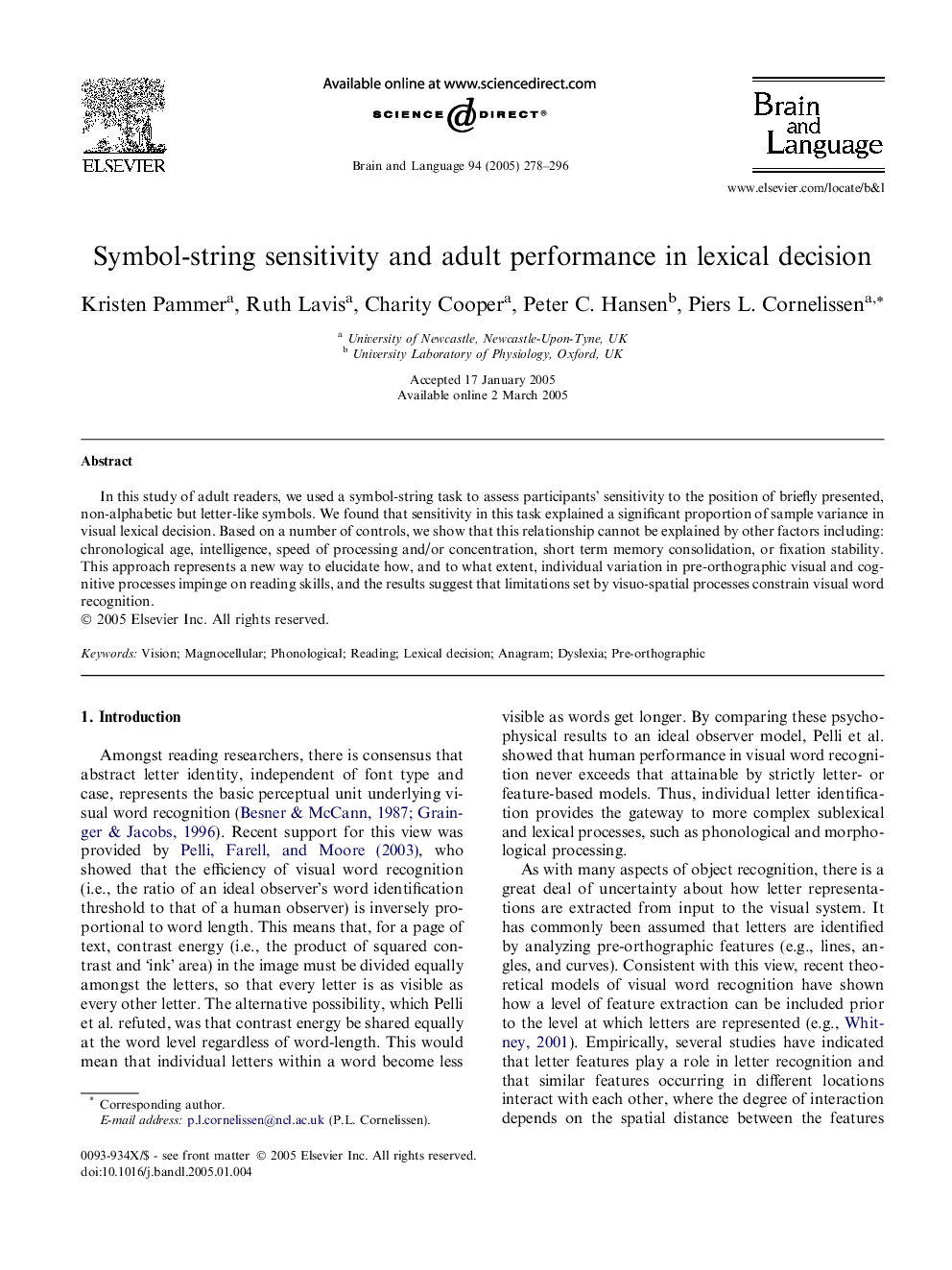| Article ID | Journal | Published Year | Pages | File Type |
|---|---|---|---|---|
| 10456555 | Brain and Language | 2005 | 19 Pages |
Abstract
In this study of adult readers, we used a symbol-string task to assess participants' sensitivity to the position of briefly presented, non-alphabetic but letter-like symbols. We found that sensitivity in this task explained a significant proportion of sample variance in visual lexical decision. Based on a number of controls, we show that this relationship cannot be explained by other factors including: chronological age, intelligence, speed of processing and/or concentration, short term memory consolidation, or fixation stability. This approach represents a new way to elucidate how, and to what extent, individual variation in pre-orthographic visual and cognitive processes impinge on reading skills, and the results suggest that limitations set by visuo-spatial processes constrain visual word recognition.
Related Topics
Life Sciences
Neuroscience
Biological Psychiatry
Authors
Kristen Pammer, Ruth Lavis, Charity Cooper, Peter C. Hansen, Piers L. Cornelissen,
